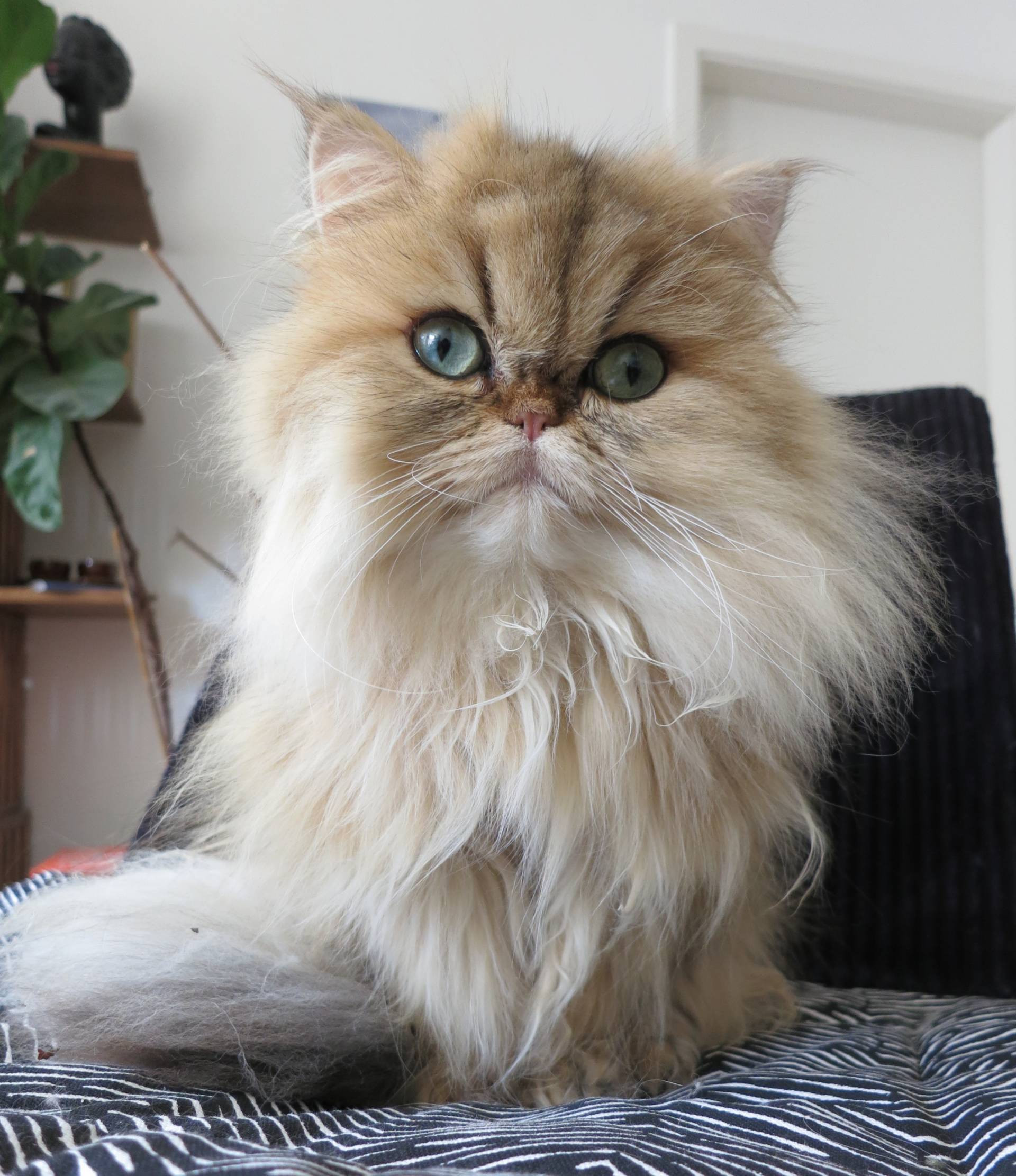Bringing your feline friend home clean and fresh after a bath should be a happy occasion, right? Sometimes, it turns into a hissing, growling standoff between your cats! I learned this firsthand when I decided to bathe my cat, Cornelius. What followed was a surprising lesson in feline behavior and “non-recognition aggression.”
Like many pet owners, I opted for a home bath in the tub. Cornelius wasn’t thrilled, offering the usual feline protests, but nothing too dramatic. Meanwhile, our other cat, Elizabeth, hovered anxiously outside the bathroom door, her typical reaction to any closed door. Bath time concluded, I wrapped Cornelius in towels, skipping the blow dryer to minimize stress, and let him air dry.
Initially, Elizabeth seemed more concerned than hostile. She followed Cornelius, sniffing and observing him as he tried to groom himself and regain his composure. However, about an hour later, the atmosphere shifted dramatically. A low growl rumbled through the quiet, escalating into hisses and snarls. Elizabeth was directing a full-blown aggressive display at Cornelius, her behavior mirroring her reaction after being spayed.
 Elizabeth hissing at Cornelius after his bath, displaying non-recognition aggression.
Elizabeth hissing at Cornelius after his bath, displaying non-recognition aggression.
After her spaying surgery, Elizabeth exhibited redirected aggression, seemingly taking out her discomfort and stress on Cornelius. But this time, Elizabeth hadn’t been bathed or experienced anything stressful. Why was she suddenly acting like Cornelius was a stranger?
Decoding Non-Recognition Aggression in Cats
This puzzling behavior is known as non-recognition aggression. It occurs when a cat becomes uncharacteristically aggressive towards a familiar cat, often a housemate they usually get along with. This can happen after separations, vet visits, and, as I discovered, even after just one cat has a bath.
It might seem unbelievable that a simple bath could make a cat unrecognizable to its companion. Even feline experts don’t fully understand this phenomenon. The leading theory suggests that the bathed cat’s scent changes so drastically that the other cat no longer recognizes them. This olfactory disruption can trigger confusion, anxiety, and aggression. Unfortunately, once non-recognition aggression occurs, it’s more likely to happen again in similar situations.
Navigating the Hissing and Growling: How to Manage Non-Recognition Aggression
Witnessing your usually friendly cats turn on each other is stressful. Here’s how to safely manage non-recognition aggression:
- Don’t let them “fight it out.” Allowing cats to engage in physical fights can severely damage their relationship long-term.
- Supervise and Separate: Closely monitor both cats, and provide them with separate spaces where they can observe each other safely without direct contact.
- Scent Swapping is Key: Help them re-familiarize themselves with each other’s scents. Brush both cats with the same brush, swap their bedding or blankets, or even use a shared carrier.
- Distraction and Play Therapy: Engage both cats in separate play sessions with toys to redirect their attention and reduce tension.
- Positive Reinforcement with Treats: Use treats as rewards to encourage positive associations. Feed them treats near each other, gradually decreasing the distance as they become more comfortable.
- Patience is Paramount: Recovery can take time – hours, days, or even weeks in some cases. Be patient and allow them to adjust at their own pace.
- Prevention is Better than Cure: Preventing escalation is crucial to avoid long-lasting aggression issues.
My Personal Experience: A 24-Hour Standoff
Fortunately, Cornelius is a remarkably laid-back cat. He seemed more confused than threatened by Elizabeth’s sudden hissing and growling. I kept a close eye on them throughout the day. Initially, whenever Cornelius approached Elizabeth, I gently guided him away to prevent any physical altercations. He was bewildered by her strange behavior and kept trying to approach her, which, understandably, didn’t improve her mood.
That evening, thankfully, they were able to eat and sleep in the same room without incident. However, the next morning, the growling was still present, though less intense. In our case, the non-recognition aggression lasted on and off for about 24 hours. My original plan to bathe Elizabeth afterward was immediately postponed!
Now, a week later, Cornelius and Elizabeth are back to their usual, amicable selves. This experience has taught me a valuable lesson. In the future, I plan to avoid taking only one cat to the vet, and perhaps even consider bathing them together (though that might be a story for another day!).
This incident also highlighted the importance of considering professional help. If you’re looking for a Cat Bath Near Me, remember that even professional grooming can sometimes trigger non-recognition aggression in multi-cat households. Being aware of this possibility and knowing how to manage it is crucial for maintaining harmony in your feline family.
Have you ever experienced non-recognition aggression after bathing your cat, or perhaps after using a “cat bath near me” service? Share your stories and tips in the comments below!

